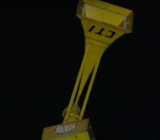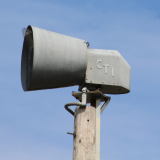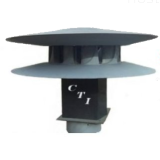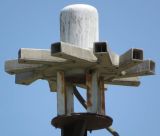Compliance Technologies, Inc.
Compliance Technologies, Incorporated, commonly abbreviated as CTI, was a short-lived Homewood, IL (later Broken Arrow, OK) based company founded in 1991. Originally beginning as a custom fire truck equipment dealer, they set their sights to creating outdoor warning sirens in the early 2000s to ride the wave of the "siren craze" of the era. However, due to fierce competition in the market, CTI lasted only 2 years before closing up shop, and very few of their sirens remain today.
History

CTI was founded on May 16th, 1991, in Homewood, IL. The company originally supplied custom equipment for fire department trucks such as deflector plates for the Federal Q-Siren fire truck siren. By the late 90s, they moved to Broken Arrow, Oklahoma and were now installing siren systems for cities across Oklahoma. They installed a mass of American Signal RM-130s for Ardmore, OK in 1998, hiring Ben Shinn as a subcontractor for the project.
CTI's siren venture began in the early 2000s as an attempt to cash in on the new siren craze at the time. Ben Shinn would act as a dealer for these sirens, alongside offering parts for discontinued siren models including the Federal Signal Thunderbolt and ASC RM-130. His parts business was called "ShinnParts". Shinn also refurbished sirens under the CTI brand, with such sirens having "CTI" or "SHINN" branded on them. A few CTI branded Thunderbolts existed in Tulsa, OK, though they have since been removed. As of 2023, very few CTI-branded refurbished sirens exist.
The first StormMaster website popped up in 2002, with Ben Shinn acting as a dealer. None of these sirens appear to have been sold outside Oklahoma. The biggest problem with CTI besides quality control was the inability to seriously compete with established siren companies. CTI bowed out of the siren market almost as soon as they entered; they couldn't live up to the flashy promotional material posted on their old website. Had there been more resources behind CTI, they might have had a better chance at surviving. The company folded in 2004, after only two years in the siren market. As of today CTI is no longer in business, and very few remaining examples of their sirens still exist today.
Products
StormMaster

SMR-15 (StormMaster I)
The SMR-15 (also referred to as the StormMaster I) is a rotational siren that was CTI's highest performance option. The siren makes use of a 12-port single tone rotor and stator, driven by a 20 hp (later 15 hp) AC motor, in either single or three phase power. The rotor appears to have been sourced from Federal Signal, being near identical to a Model 5's rotor. Seeing as CTI was a small company, it likely lacked the ability to cast its own rotors. The siren uses a similar design to Federal Signal's 2001 series of sirens, where each stator port has an L-shaped throat that projects the sound forward out of the projector. The siren uses a projector very similar to an ACA Penetrator-10, with a conical intake in the middle. The siren appears to use a belt-driven rotator driven by a separate motor, as its operation is independent of the rotor. This belt is prone to faults, leading to the siren often failing to rotate or struggling severely to successfully rotate.
The rotator, along with the motor and collector rings are protected by a uniquely shaped motor cover, and the whole siren unit rotates on a stationary platform, similar to an ACA Howler. Both the motor cover, as well as the protective mesh screen on the projector are branded with "CTI" lettering. The SMR-15 is rated for a range of 128 dB at 100 ft, with a coverage range of 4 miles according to CTI's website. Whether or not it actually lived up to this range is unknown. Every SMR-15 came standard with an Alertech siren control module, though they are also compatible with controllers from other manufacturers.

SMO-15 (StormMaster Omni)
The omnidirectional SMO-15, also known as the StormMaster Omni, was introduced in 2004. The rounded stator ports bear similarity to contemporary Federal and ASC fare, however it is not a total match. There are no particular specifications for this siren. If one looks carefully one can see the motor housing located below is a cube shape; an unorthodox choice. The siren appears to be a 10-port single tone siren, driven by a 15 hp AC motor in either single or three phase power. The siren is rated for 115 dB at 100 ft. The siren's ports are rounded, and the port holes are offset inside the rounded sections. The siren's rainshield doubles as a projector alongside a skirt below the stator to help project the siren's sound evenly. Its overall shape is very similar to ASC's OM-120.
It is unknown how many of these units were sold, but as of today they are believed to be extinct, if any were ever installed in the first place.

StormMaster DC
CTI also experimented with a DC battery-backup model, known as the StormMaster DC. It is doubtful CTI ever had a large-scale manufacturing facility to build them, as these sirens are very crudely built and prone to premature mechanical problems. The siren had notoriously flimsy rectangular horns, and looked more reminiscent of a shop class project than any professional product according to many enthusiasts.
The StormMaster DC siren is hardly mentioned anywhere on CTI's website. It seems there was never a formal page dedicated to it. Invariably, it was not a success given its lacklustre performance and low quality build. Few units were ever sold, with only one inactive example remaining in Okmulgee, OK. Another unit ended up in private possession, albeit in inoperable condition.
